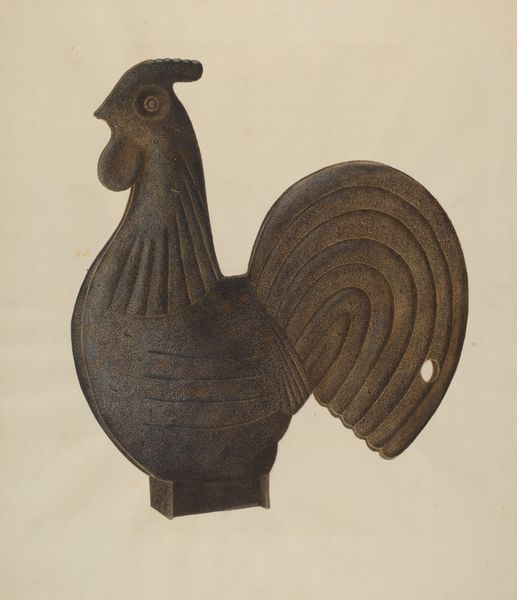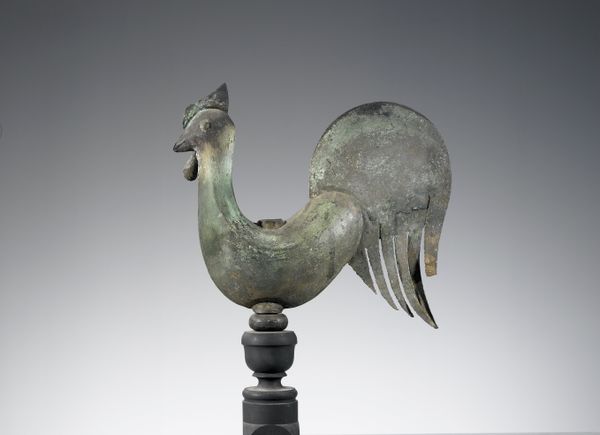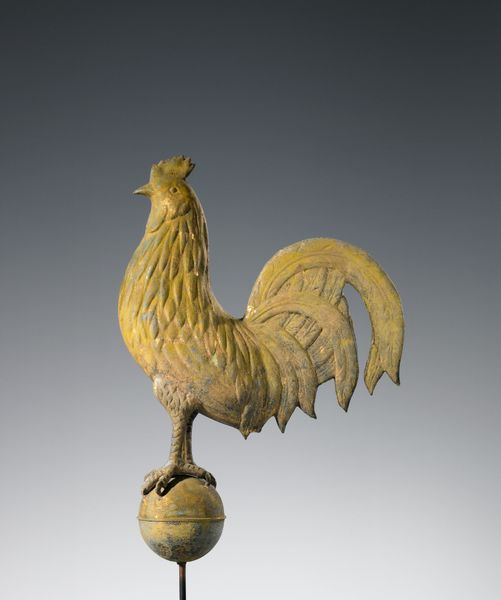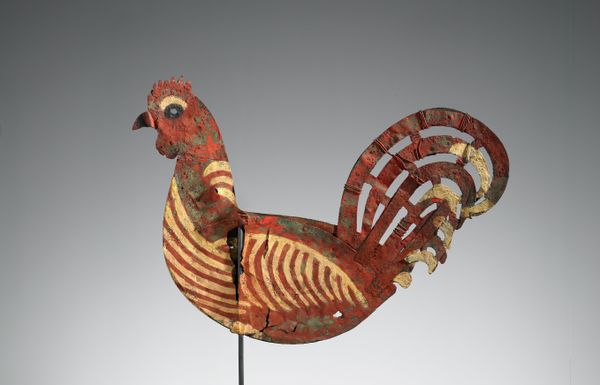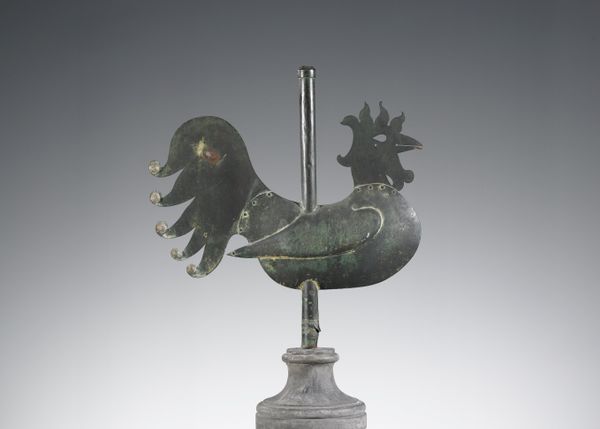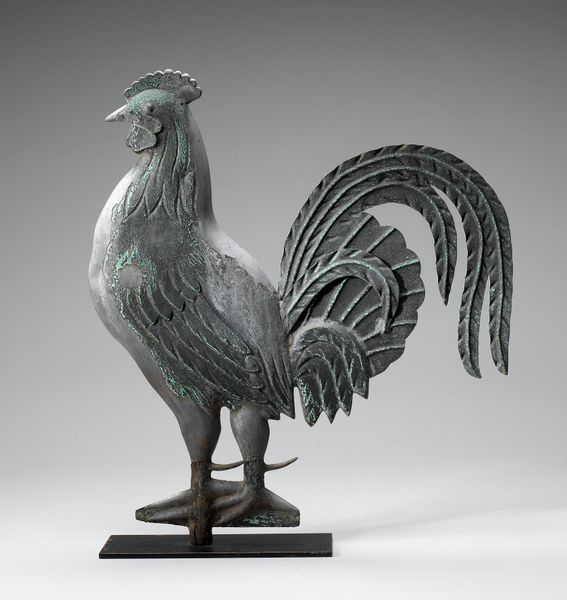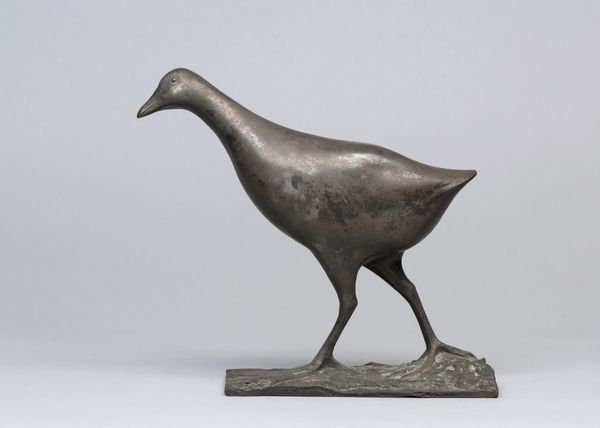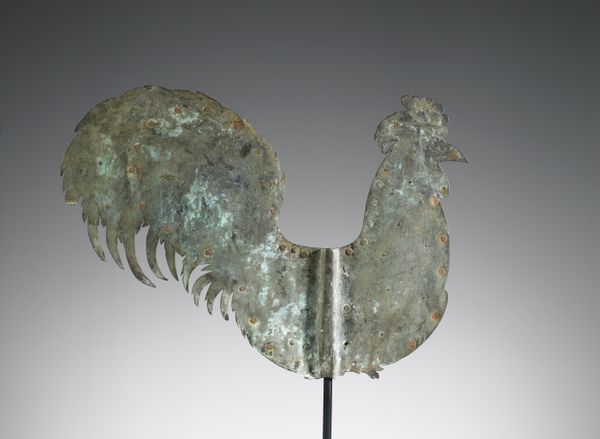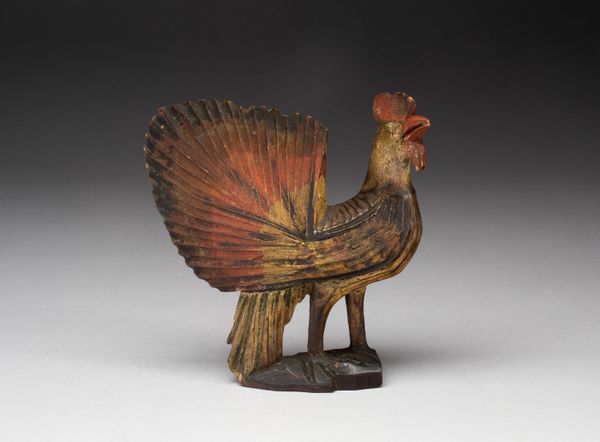
metal, sculpture
#
metal
#
sculpture
#
folk-art
#
geometric
#
sculpture
Dimensions: 39 x 27 in. (99.06 x 68.58 cm)
Copyright: Public Domain
Editor: Here we have a metal rooster weathervane, dating back to around 1860. What immediately strikes me is its angular, almost geometric design, particularly the fanned tail. What do you see in this piece? Curator: Its formalism, or lack thereof, presents a fascinating paradox. The rooster is immediately recognizable, yet rendered with an almost brutal simplicity. The artist prioritizes the essential form, stripping away extraneous detail. We might consider the interplay of positive and negative space. How do the voids within the tail contribute to the overall sense of dynamism? Editor: That's interesting, I hadn’t considered the negative space as contributing to the feeling of movement. Do you think the material itself – the weathered metal – plays a role? Curator: Indubitably. The patina, the rust, speaks volumes. It is not merely decorative; it is integral to the artwork’s identity. It’s the passage of time, etched onto the very surface. This corrosion introduces an element of chance, an uncontrolled variable that ultimately enriches the work. The unpredictable surface texture breaks with clean aesthetic lines offering a sort of uncontrolled artistry in itself. Editor: So, you're saying the decay adds to the rooster's artistic value? Curator: Precisely. Think about it in terms of texture and surface. A pristine, newly fabricated metal rooster would lack this depth, this tangible history. It would be a mere simulacrum. Editor: That makes me look at it with new eyes. I see how the simplicity of form, combined with the complexity of the aged metal, creates a far richer piece. Curator: Indeed, it reminds us that sometimes, the most compelling art lies not in meticulous representation, but in the evocative power of pure form and material transformation.
Comments
minneapolisinstituteofart almost 2 years ago
⋮
For townspeople of the 1700s and 1800s in America, reading the weather was simply a matter of looking up. Weathervanes graced the roofs of meeting halls and churches in the town center. Farmers and others who lived outside of town often made their own weathervanes. Early examples like this highly stylized rooster from Bucks County, Pennsylvania, were usually two-dimensional and hand cut from wood or sheet metal.
Join the conversation
Join millions of artists and users on Artera today and experience the ultimate creative platform.


